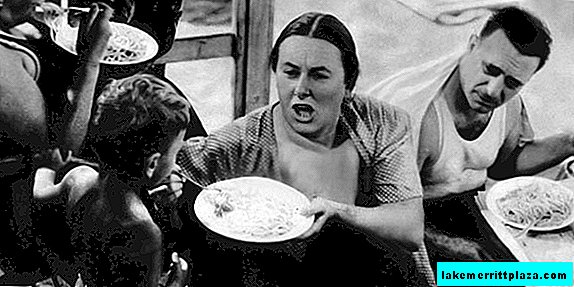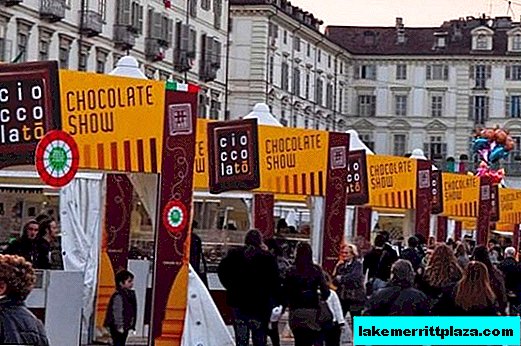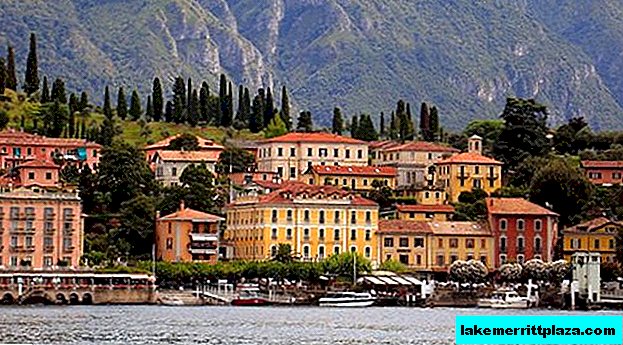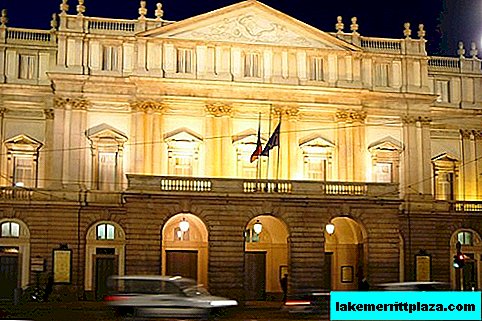Italian Biscotto (Biscotto) or Biscotti (often referred to in the plural) know, without exaggeration, everything. This is not just a sweet treat, it can easily be called a symbol of the vast world of cookies. True, outside of Italy, including in our country, the term Biscotti is not used correctly. Italians use it to denote all types of dry, crisp pastries of various shapes, sizes and tastes. We mean only one variety, which in the republic is called cantuccini, cantucci, or Biscotti from Prato.

Therefore, the question that arises among some people “what is the difference between biscotti and cantucci?” In their homeland will seem ridiculous. Cantucci is a variant of biscotti, and in our understanding, the same baking is generally the same.
Story
Cantucci recipe appeared relatively recently - in the Renaissance, presumably in 1691 in Prato. And biscotti, like dry and long-stored pastries, were born back in the Roman Empire. They were made for soldiers leaving on long marches. Freshly baked cakes, seasoned with almonds, were baked again after cooking to remove any remaining moisture. Hence the name Biscotti, which means "double baked". The shelf life of such a treat was so long that the philosopher Plinius the Elder (Plinius Maior) once boasted that they would be edible for several centuries. When the Roman Empire collapsed, cookies disappeared along with it until the Renaissance.

The once-fresh bun Tuscan bakers filled with new flavors. They added aniseed vodka, lemon, amaretto, and various spices to the dough. Almonds became part of cookies later, and then began to use other nuts and dried fruits, as well as raisins, figs, dates and quinces. The most daring culinary experts complemented the taste of biscotti with pieces of chocolate.

In the 19th century, Antonio Mattei (a pastry chef from Prato) put an end to the search for the best cantucci option by developing a recipe that became classic. He has received many awards at exhibitions in Italy and abroad. He was especially appreciated at the world exhibition in Paris in 1867. His "Mattonella" store still exists today in Prato and is considered the site of "keeping the Cantucci tradition."
Description
Biscotti have a traditional elongated shape obtained by cutting the baked dough diagonally. The surface of the cookies is golden with inclusions of whole almonds. The length can be different, but, as a rule, does not exceed 10 cm.

Cantucci dough consists of flour, sugar, eggs, almonds and butter. Sometimes sugar in the recipe is replaced with honey, and butter is replaced with olive. Almonds in baking are not fried. Traditionally, cantucci is sold accompanied by another Tuscan treat, Brutti ma Buoni.
Sometimes under the name "Biscotti di Prato" you can find a not quite classic version. It can be either one of many versions of cantucci or a fake of the original variety. The latter is often characterized by the absence of oil and the presence of a large number of flavorings.
Recipes
One of the Italian desserts that you can easily prepare is cantucci - a sweet treat with a taste of home comfort. In Italy, it is traditionally accompanied by a glass of Santo wine or served at the end of the meal.

There are many versions of Biscotti di Prato. For example, the option with pistachios. But the original recipe for this cookie only includes almonds.
Classical
To prepare classic cantucci, you will need:
- Flour - 400 g;
- Eggs - 3 pcs.;
- Baking powder (baking powder) - 0.5 sachets;
- Sugar - 100 g;
- Almonds - 100 g;
- Salt is a pinch.
To knead the dough, it is necessary to prepare the work surface. Wash and dry the table or large cutting board in advance. Pour a hill of flour on it, on top of which we make a large depression. We send baking powder, sugar, salt and eggs there. Mix everything thoroughly with your hands. The result is a very flexible, soft mass. If the dough turned out to be tight, then add a little milk, if liquid - add a handful of flour. Do you like more tender pastries? Then add to the mass of 15 g of melted butter.
Almonds lightly fry in a pan or in the oven. The process should take only a few minutes, as the nuts will reach readiness when baking in the dough.
Ready almonds are added to the resulting mass and mixed until the nuts are evenly distributed. Finally, we form long and narrow loaves. Their width does not exceed 3 cm.

Preheat the oven to 180 degrees, and cover the baking sheet with parchment paper, on which we distribute the loaves of dough. Bake for about 20 minutes. Once they begin to harden, we take out and cut into pieces about 2 cm thick.
Almost ready biscotti di Prato again sent to the oven, but for 10 minutes. We get out of the oven and allow to cool completely. Your cantucci will diversify the daily menu or become a wonderful wine aperitif at the festive table.
From Julia Vysotskaya
The famous actress and part-time television chef also could not do without a recipe for Italian biscotti. Its version has additional ingredients.
So, for biscotti from Julia Vysotskaya you will need:
- Flour - 200 g;
- Sugar - 125 g;
- Lemon - 2 pcs.;
- Eggs - 2 pcs. and separately 1 yolk;
- Almonds - 65 g;
- Butter - 2 tbsp. spoons;
- Pecans - 65 g;
- Baking powder - 0.5 tbsp. spoons;
- Corn or buckwheat flour - 1.5 tbsp. spoons.
First, beat the eggs and yolk with a whisk until the volume is 2 times larger. We combine flour with a baking powder. Grind some nuts into small crumbs. In a deep bowl, mix the prepared ingredients, add the zest and 1 tbsp. a spoonful of lemon juice, melted butter, whole nuts and cornmeal. Knead the dough and form one long and wide loaf about 2 cm high.
Bake in an oven preheated to 150 degrees for about 40 minutes. Cut into slices, which are dried at 180 degrees until the cantucci crust is browned. Let the pastries cool and enjoy the biscotti from Julia Vysotskaya accompanied by a cup of coffee.
Calorie content
Like other sweet treats, biscotti is a fairly high-calorie product. 100 g of dessert contains about 430 kcal, consisting of:
- Proteins 8.3 g;
- Fats 12.6 g;
- Carbohydrates 70.5 g.

Most of the nutritional value is due to the presence of sugar and almonds, so cookies are far from the diet of people leading a healthy lifestyle, or, conversely, having problems with being overweight. Although cantucci cholesterol is relatively small - about 17 mg per 100 g.
Even the dietary version without butter contains about 400 kcal. Therefore, if you can eat 2-3 cantucia and stop, then this will be a great option for your body. If your dose of biscotti is a pack of 250 g, then it is better not to store cookies in your pantry.
On this, the story of the famous cookie came to an end. Without a doubt, homemade cakes are second to none. But, to bring the taste of your biscotti to perfect, you just need to try the original in his homeland. Hurry to Italy, live boldly, joke with a sober head and remember: "There is no smoke without fire, and biscotti - without a second baking!"








